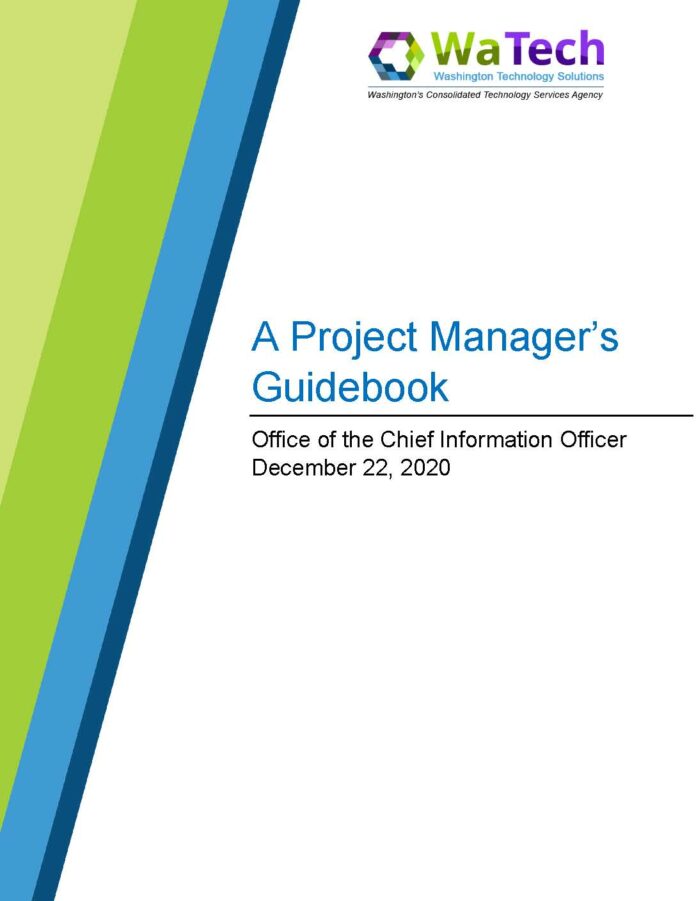What is the purpose of this guide?
The guidebook is a resource to help business and technology project managers learn the basics of project management. It provides a step-by-step process for managing projects from initiation through closeout as well as supporting templates.
This toolkit is only a guide. It is intended to be flexible and scalable. Larger, high-risk projects may follow these guidelines more strictly while smaller, lower-risk projects may choose to apply the project management tools and templates in accordance with the unique needs of the project. The project approach taken should take into account severable variables:
- Organizational culture. What is the organization’s capabilities and capacity, and unique project management policies and standards?
- Project scale. Projects can range from small and simple involving a single business unit to large and complex with multiple large agency impacts.
- Implementation approach. A project may follow many planning and implementation methodologies, including waterfall, agile, hybrid, or planning wave.
- Project type. There are many different project types including software upgrade, enhancement, replacement or new implementation, technology infrastructure, telephony, and communications, security, privacy and data protection, data management and analytics, web and online portals, and facilities relocation.
It is important to select a project management approach that incorporates best practices but is flexible to accommodate the unique aspects of the project.
What is a project?
The Project Management Institute (PMI) defines a project as “a temporary endeavor undertaken to create a unique product, service or result.â€1 A project is temporary with a defined beginning and end in time. It is unique in that it is not routinely performed. The purpose of a project is to meet its goals and conclude.
What is project management and why is it important?
PMI defines project management as “the application of knowledge, skills tools and techniques to project activities to meet the project requirements.â€2 The purpose of project management is to implement projects on schedule and within budget and to deliver planned outcomes with business value.
How to use this guide
This guidebook is written for project managers. It is important to note that there are many other tasks performed or led by the project sponsor, steering committee, implementation team, or vendor. Also, many tasks included here are done in collaboration with or with support from these project stakeholders.
This guidebook is organized according to the following five project phases:
- Chapter 2: Project initiation
- Chapter 3: Planning and procurement
- Chapter 4: Project execution
- Chapter 5: Project monitoring and controlling
- Chapter 6: Project closure


